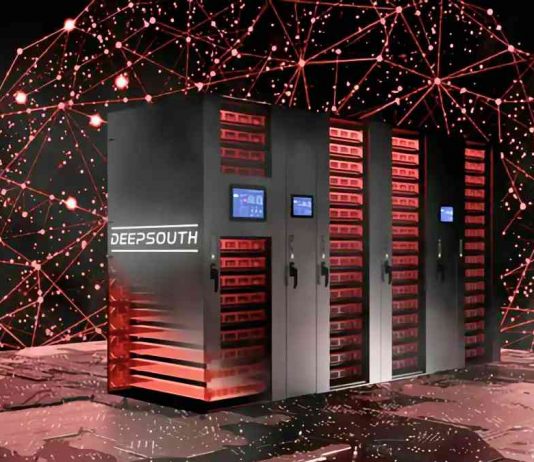Australia is on the verge of introducing DeepSouth, a supercomputer with the unprecedented capability to simulate the human brain’s functionality. This project, a collaborative venture led by Western Sydney University and the International Centre for Neuromorphic Systems (ICNS), is expected to be operational by April 2024.
DeepSouth, drawing its name from IBM’s pioneering TrueNorth system and the chess champion-defeating Deep Blue, is poised to be the first machine of its kind. It employs a neuromorphic system, which mimics biological processes, setting it apart from traditional computing systems that rely on the Von Neumann architecture of separate CPU and memory.
The supercomputer’s hardware is designed to emulate large networks of neurons, achieving a staggering 228 trillion synaptic operations per second. This design not only enhances its computational power but also ensures greater efficiency in energy consumption and space utilization.
In comparison, the human brain can process an exaflop — a million trillion mathematical operations per second — using just 20 watts of energy. DeepSouth aims to replicate this level of efficiency, a feat that current standard computers, using Graphics Processing Units (GPUs) and multi-core Central Processing Units (CPUs), struggle to achieve due to their high energy consumption and slower speeds.
The implications of DeepSouth extend far beyond raw computational power. It holds the potential to revolutionize the field of neuroscience by providing insights into the functioning of the human brain, an area where progress has been hindered by the limitations of current simulation capabilities.
Moreover, DeepSouth is expected to have practical applications in various industries, including biomedical, space, and robotics. The supercomputer could facilitate the development of more efficient artificial intelligence processes, surpassing the capabilities of current models. This aligns with global technological trends, such as China’s recent initiative to develop advanced humanoid robots by 2025, which underscores the integration of robotics with AI.
DeepSouth’s scalable and reconfigurable system allows for the addition of more hardware to create larger systems or the reduction of its size for smaller, more portable applications. This flexibility could lead to the development of more powerful and efficient smartphones and other devices. The use of commercially available hardware components also means that DeepSouth can be replicated in other data centers worldwide, overcoming the limitations and high costs associated with custom-designed neuromorphic systems.


